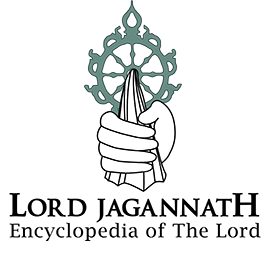Rath Yatra in Skanda Purana
Social or familial, religious or political, a tradition usually originates from an objective and gets refined with the dedication in observing it. Both the objective and the dedication are indispensable in keeping a tradition alive with all its glory and effects. Rathyatra over the years has been kept alive along with its essence to invoke in people a longing of spiritual elevation.
Skanda Purana presents a recipe for an ideal observation of Rath Yatra, which includes an account of the things that must be paid attention to both before and during the festival. The earliest activity of the festival is to invite a Brahmin pundit [acharya] precisely on Vaishakha shukla pakshya papanasini tritiya that comes along with rohini nakshyatra. Thereafter three chariots are to be made under the supervision of one or three carpenters who are expert in the art of chariot building. In those chariots, there should be comfortable, nice-looking and artistically built seats for the deities. Certain rituals are then to be performed to sanctify those chariots and make them suitable for the Lord almighty and formally ready for use.
Then comes the task of cleaning and decoration of the street on which the chariots are to run. Either sides of the road must be decorated with flower bouquets, beautiful clothes and plants, to make the road look like a garden of flowers. The roads should be thoroughly levelled so that the chariots can run smoothly. There must not be mud on it. Smoke bowls emitting fragrant smoke are to be kept on both sides of the road. The paths should be sprinkled with sandal wood water. The musical instruments like nagada and dhakka [drums] should be played. Artistic flag posts made of gold and silver with flags should be on the road. The roads should be strewn with baijayanti garlands. Well-decorated elephants and horses should be present there.
On the day, when Ashaadha shukla pakshya dwitiya tithi is conjugated with pushya nakshyatra, the Lord should be worshipped at sunrise. The king along with the Brahmins, Vaishnavas, saints and ascetics should implore upon the Lord with folded hands to commence his auspicious journey. Thereafter, songs of well-being [mangal geet] should be sung. Then there should be cheers and shouts with the songs of the Lord’s glory. Manual fans with handles of gold on their sides should be used to supply cool air. The environment should permeate with the smokes from aromatic incense sticks. The sounds of the musical instruments namely, percussions, string instruments, flutes etc. should accompany the journey of the Lord with an appealing melodious tone, while the deities are being escorted by Brahmins, Kshyatriyas, and Vaishyas to their respective chariots. The trip to the chariot must be punctuated with several breaks for the rest of the deities on soft cotton mattresses. Then finally the three deities should be seated upon soft mattresses on the chariots. They should be decorated with varieties of clothes, jewellery and garlands. Thereafter, they should be duly worshipped.
People truly devoted to Lord Jagannath are entitled to go to heaven by getting a glimpse of Him on the chariot. His piercing purifying gaze can even sanctify the mud on the road accumulated by unexpected rains and can also wash off the sins of mud caked for lives on the Vaishnavas, who prostrate before him on that mud on the road. People singing the glory of the Lord and dancing to the tunes of his glory, get liberated during this festival. People accompanying the journey of the Lord and chanting ‘Jai Krishna’ up to the Gundicha temple get freed from the cycle of birth and death. The people fanning the deities with flower bouquets or any other kind of fans get liberated by going to Brahmaloka. People who take rounds around the chariots chanting Vishnu Sahasra Nama go to Vaikuntha. The air touching the bodies of the deities gets purified and charged with his blessings. It removes the sins of all life forms.
The journey of the Lord takes place every year in order to invoke faith and devotion even in the hearts of the non-believers and ignorant people. That’s how the Lord completes the first part of his journey by arriving at Gundicha Nagar, where he stays for seven days. On the eighth day the chariots are turned around and made ready for the return journey. Then the chariots are decorated with clothes, garlands etc. Then on the morning of Ashaadha Shukla Navami, the three deities are again installed on the chariots. This return journey is as auspicious as the previous journey. Both the journeys and entry into the respective temples are to be considered as a single festival that extends for nine days. This festival is also known as Mahavedi Mahotsava or Gundicha Mahotsava and is now popularly known as Rath Yatra. This is held every year to fulfil a promise Lord Jagannath had once made to the king Indradyumna. He had given him word to reside in Gundicha Nagar adjacent to Bindu Tirtha every year. People get salvation by taking bath in the tirtha and having a darshan of the deities.
